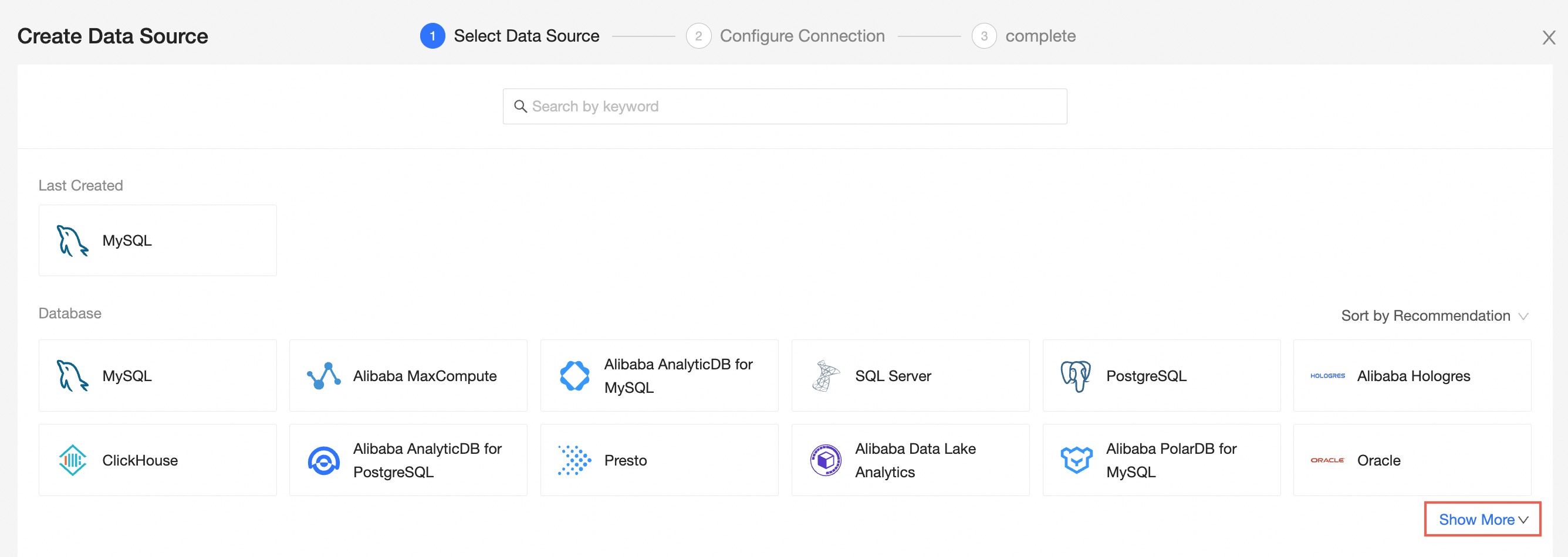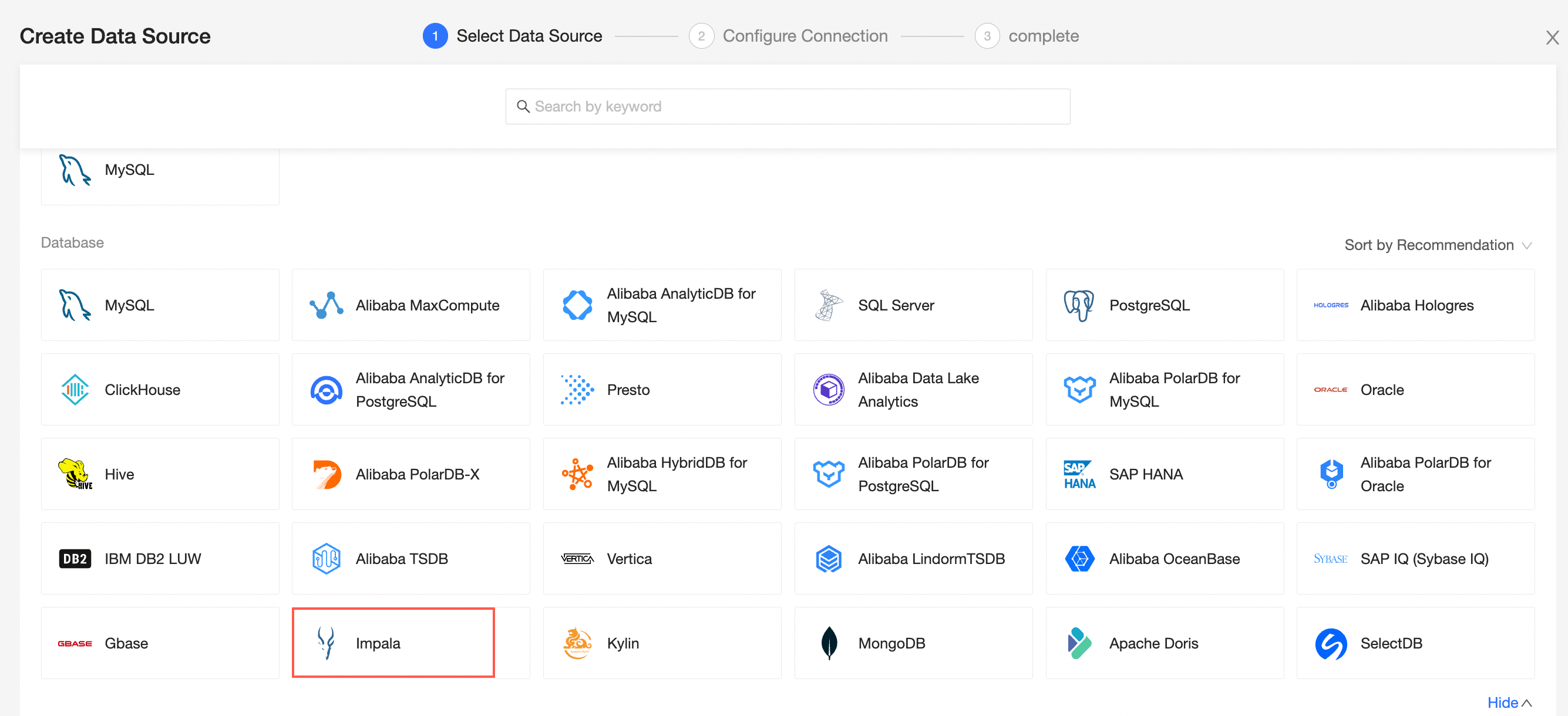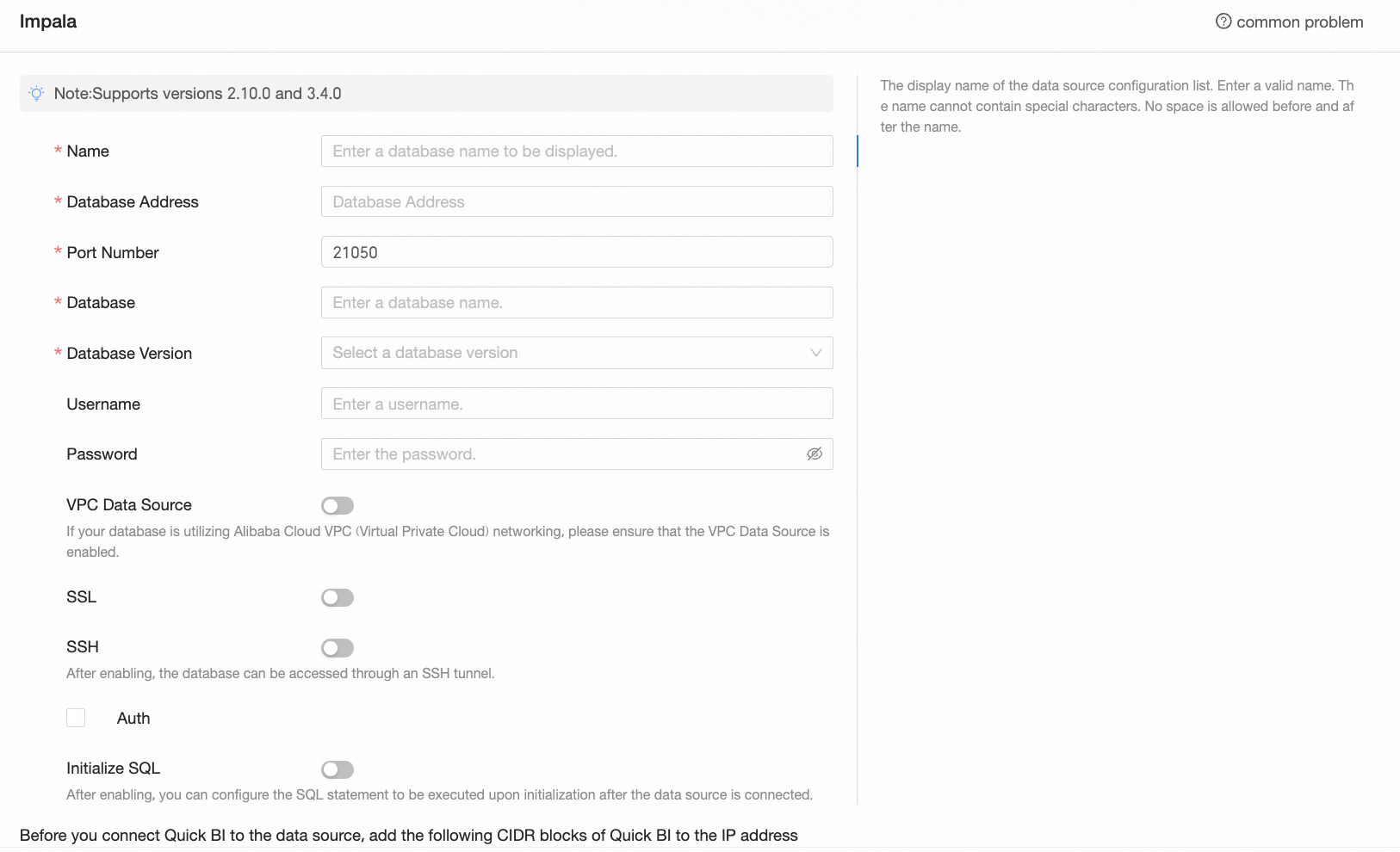This topic explains how to add a user-created Impala data source in a group workspace. The feature is available only in Quick BI Enterprise Standard and Quick BI Pro.
Prerequisites
Ensure your network meets the following requirements:
To connect Quick BI to your Impala database over the Internet, add the IP address of Quick BI to the database's whitelist. For more information, see add security group rule.
To connect Quick BI to your Impala database over an internal network, use one of the following methods:
For Impala databases deployed on ECS instances, use a VPC to access the data source.
Deploy a jump server and access the database via an SSH tunnel.
A user-created Impala database is established.
Obtain the username and password for accessing the Impala database.
Limits
Supports versions 2.10.0 and 3.4.0.
Procedure
Log on to the Quick BI console.
Follow the steps in the figure below to add a user-created data source.
Navigate to the data source creation page via the data source creation entry.
Click Show more.

Select the Impala data source.

In the Add Impala Data Source dialog box, fill in the required fields.

Name
Description
Display Name
The display name in the datasource config list.
The name cannot contain special characters or start or end with spaces.
Database Address
The address where the Impala database is deployed, including the IP address or domain name.
Port
The port number of the database. Default value: 21050.
Database
The name of the database that you want to access.
Database Version
Select the database version. Versions 2.x and 3.x are supported.
Username and Password
The username and password that are used to access the database. Make sure that the username has the create, insert, update, and delete permissions on the tables in the database.
VPC Data Source
Specifies whether to access the data source over a VPC based on your business requirements. If you select VPC Data Source, you must configure the following parameters:
Buyer Accessid: The AccessKey ID of the purchaser of this instance.
For more information, see obtain an AccessKey.
NoteMake sure that the AccessKey ID has the Read permission on the destination instance. If the AccessKey ID also has the Write permission on the corresponding security group, the system automatically adds the whitelist. Otherwise, you must manually add the whitelist. For more information, see create a custom policy.
Buyer Accesskey: The AccessKey Secret of the purchaser of this instance.
For more information, see obtain an AccessKey.
Instance ID: The ID of the purchaser of this instance. Log on to the ECS console and obtain the instance ID on the Instances tab.
For more information, see view instance information.
Area: The area where this instance is located.
For more information, see view instance information.
SSL
If the destination data source is configured with SSL, you can also select SSL in the security protocol to protect data security when connecting to the destination database.
SSH
Specifies whether to access the data source over an SSH tunnel based on your business requirements. If you select SSH, you must configure the following parameters:
SSH Host: The hostname or IP address.
SSH Username: The SSH username that is used to access the database.
SSH Password: The password of the SSH username that is used to access the database.
SSH Port: The port number of the database. Default value: 22.
NoteOnly Quick BI Enterprise Standard allows you to access user-created data sources in group workspaces over SSH tunnels.
Auth
You need to enter the Username and Password only if this option is selected.
Initialize SQL
After this option is enabled, you can configure the SQL statements that are executed to initialize the data source connection.
Only SET statements are allowed in the SQL statements that are executed to initialize the data source connection. The statements must be separated by semicolons and cannot contain line breaks.
Click Connection Test to verify the data source connectivity.

Once the test is successful, click OK to finalize the data source addition.
What to Do next
Once the data source is added, you can proceed to create datasets and analyze data.
To add data tables from the Impala database or create custom SQL in Quick BI, refer to create and manage datasets.
For adding visualization charts and data analysis, see create a dashboard and visualization chart overview.
To explore and analyze data in depth, consult drill settings and display.